There’s never a bad time to take a trip, but knowing how to plan a vacation for your family can seem overwhelming. Don’t worry! I love making travel plans, so I’ve got you covered. If you need help with how to plan a family vacation keep reading. I’ve broken down the steps for the best ways to plan a trip.
Note: This post on How to Plan a Trip has affiliate links from trusted partners and websites such as Amazon, and any purchases made through such links will result in a small commission for me (at no extra cost for you).
Here are 5 steps to plan a trip
Get Inspired
Before you can plan a trip you need to be inspired to go somewhere. What places or activities spark your interest and curiosity? What are your passions? Bucket list goals? Foods you like to eat? Have any books or movies made you aware of someplace new?
Make sure you sit down with your family or travel companions and discuss dreams and ideas for your next adventure. This will open up so much inspiration on which you can begin researching for your next travel destination.
Decide Your Limits
This may sound like a bummer, but hear me out. Knowing the perimeters for your trip will allow you to plan a family vacations you’ll never forget.
3 Travel Limits
Know your budget:
Sure, it would be nice to take a grand world tour, but let’s be realistic, most of us cannot afford to do something like that. So as you are brainstorming ideas for your perfect family trip, make sure to have a general spending amount in mind. As you list out places you’d like to visit, your budget will help you narrow down what is actually possible.
Length of vacation time:
We can’t all be nomadic family travelers, and we have to work within the constraints of school schedules and vacation times from our jobs. Knowing your trip length from the get go will help you decide which location would suit your family the best.
Travel distance:
Will your family adventure involve a road trip or an airplane? How far are you willing to travel to get to your vacation destination? Don’t forget to factor in bathroom breaks and food breaks, and wiggle breaks for little ones when traveling by car. Sometimes flying takes just as long as driving to your destination when you take into account driving to the airport, parking, going through security, waiting for planes, layovers, picking up checked luggage, and finding transportation once at your vacation spot.
Pick Your Destination
After you’ve considered all the things, its time for the fun part: pick the place that works for you. The world is your oyster, but the perfect vacation location will depend on each person or family’s personal preferences.
3 Ways to Decide Your Ideal Travel Spot:
Activities:
What activities are you dreaming of doing during your vacation? Maybe its lounging at the beach and pool all day, or maybe its hiking in the forest followed by an action packed day of sight-seeing. Think about what activities your family likes to do together and pick a place that can accommodate those fun activities. I like to alternate between outdoor/nature/science type activities and museums/culture/sight-seeing days. Think about locations and areas that fulfill your activity levels.
Food:
Food can be a huge motivator when deciding where to plan your vacation. Are you a foodie family who loves to experience the culture and authenticity of a place by eating your way through it? Plan a trip that helps you experience the many smells and tastes of a new place. You can choose a location based on its cuisine. Or pick the perfect cruise based on its restaurant reviews. Plan a cooking class or food tour as one of your activities in the region known for its local delicacies.
Bucket List Goals:
“I’ve always wanted to…” What is your fill in the blank? Be inspired to plan a trip based on somewhere you’ve always wanted to go, or something you’ve always wanted to see. The whole family can share something that excites and ignites them. Now you can research places that have a little something for everyone.
Organize a Travel Plan
Once you’ve dreamed and decided on where you should go on your vacation, its time to plan the details of your family trip.
5 Main Parts to Plan a Trip:
- Transportation
- Lodging/Accommodations
- Food
- Attractions
- Marginal Time
Transportation
Flights:
One of the most costly parts of your trip is the transportation you will take, especially if you are flying to your destination. If you’re looking to know how to plan an affordable family trip, you need to consider how you will get around during your stay.
If you are flying, be sure to start looking for airline tickets earlier rather than later. You want to get a feel of what prices are going for so you can compare and shop around.
Consider travel hacking, which is a system that uses credit card points to convert to airline miles for free travel, to help off-set the cost of tickets.
If this is something you’re interested in, start accumulating points well in advance so you have points to use when booking your tickets. Credit card companies like Capital One have travel tracking programs that will alert your when certain flight prices go up or down.
Want to learn more about how to travel for free? You can check out my Travel Hacking for Beginner’s Guide.
Although I’d love to tell you an exact formula for picking the best time to buy airline tickets, I can’t. I can’t say that the second Tuesday in October from 5am-9am will be the lowest price for your flight. It doesn’t work that way. Airline ticket prices fluctuate so frequently and are based on supply and demand according to the routes, seasons, and popularity of the destination.
I would encourage you to start comparing prices around 8 months out, and look to buy around 6-3 months out depending on if you are traveling domestic or international. You’ll want to buy earlier for international flights, usually 4-6 months out. For domestic flights, the best deals are found around 3-6 months from date of travel. But don’t wait til the last minute because that’s when flights get costly. Use search engines like CheapOair.com to find comparable pricing and Scott’s Cheap Flights for special deals.
As you plan your flights, think about your family’s personal needs. Do you have a baby that will be traveling? Request a bassinet seat on the flight. If meals will be served, you can go online and request special meal requests, like vegetarian or kids’ meals. You can find more tips in this post: Long Flights for Kids.
Driving:
Are you taking a road trip? Part of planning your vacation is making sure your vehicle is road-ready. Before you travel, make sure your car, SUV, or (if you have a crew like mine) minivan has had
- an oil change
- the tire pressure checked
- wiper fluids filled
- all your lights work.
I always clean out my van before a trip, even though I know it will get dirty during our travels.
Be sure to keep important tools in your car when you travel such as:
- a first aid kit
- jumper cables
- a spare tire and jack
- phone charger
Is your car insurance up to date and do you have a copy of your insurance in your car? Do you know what your insurance covers? For example, many auto insurances will provide a tow if your car breaks down.
Let technology help you out. Google maps now offers routes that are the fastest and routes that are the most fuel efficient. This could factor into how you plan your trip itinerary. Apps like Tripit, RoadTrippers, and Wanderlog offer a place to store and organize your travel plans.
If you are looking to save money on gas during your drive (and let’s be honest, who doesn’t like to save some coin at the pump!), make sure to have the GasBuddy app on your phone. This app lists the gas prices customers have paid recently at gas stations along your route, so you can have an idea if good gas prices are up ahead.
Another way to save money on gas and restaurants while traveling is to use Upside. This app gives you cash back on gas purchases that you can deposit back to your bank account or can be turned into gift cards. Let your gas pay for your meal when you travel.
Renting a car while at your location:
If you know you will need a rental car, its best to start checking around before your trip. 3-6 months before your trip actually. So go ahead and book your rental car when you book your airline tickets. Compare rental car company prices, reviews, and reputations. CheapOair.com lets you compare prices for car rentals and hotels as well as flights.
Check what coverage you already have. Rental car companies will want you to purchase additional insurance, but your current auto insurance may already cover you for rentals. The devil’s in the details. Know exactly what you are covered for so you can purchase what you need.
Also, use your credit card to purchase your rental. Your credit cards may also have rental car insurance, and if you choose a rental company that partners with your credit card, you may get discounts and deals. Same as with flights, credit card points can be used for rental cars. This is another way that travel hacking can get you free stuff. Did you grab that Beginner’s Guide to Travel Hacking yet? <—
- Know that the person or persons driving might affect the price. If you want your 18 year old to drive the rental, it will cost you more.
- Often airport rentals will charge more than if you pick up off site, so it might be worth one person renting an Uber to get to the car rental location, then swinging back around to the airport to pick everyone up.
- When you are picking up your rental, make sure you inspect the car with the attendant. Note any scratches, dents, stains, etc. before you sign the agreement and make sure you have it in writing. You don’t want to be charged for something you didn’t do.
- Before you turn your rental back in after a wonderful trip, make sure to find the best gas prices and fill up the tank. Rental companies charge way more if they have to fill up the gas than if you do it yourself.
Using public transportation:
If you are staying in a major city, chances are there will be some form of public transportation. This is a great way to save money on your trip, and you get to experience a more authentic view of what life is like in that place.
One of the things to plan for your trip is how to use the public transportation. Especially if you are traveling to a foreign country, it can be stressful trying to navigate your way around the city. Do yourself a favor and research the public transportation options, prices, times, and areas of operation. You can check bus and train schedules online as well as purchase tickets. This can make traveling as a family with kids so much easier.
When you are planning your itinerary, do yourself a favor and plan out your public transportation routes. Make sure the public lines get you to your attractions, sites of interest, and your hotel. Doing this planning on the front end will give you confidence during your trip and will allow you to enjoy the sights and sounds rather than stressing about how to get around.
Remember to use your manners when on public transportation.
Some universal etiquette rules are:
- Let people exit the car before you enter.
- Offer your seat to the elderly or disabled.
- Only take up the space you need.
- Don’t make excessive noise.
- Don’t use public transport if you are sick, and practice good germ prevention methods.
These trips on public transportation can be great teachable moments for children as you model how to be a courteous global citizen.
Getting to and from the airport:
One more aspect of transportation to consider for your trip in getting to and from the airport. If you are on a budget, you might choose a hotel that offers free shuttles. Just make sure they are running at the times you need to be picked up or dropped off.
Give yourself extra time if you are returning a rental car. If your rental car location is off site, then plan for an Uber or taxi to get you to the airport.
Another option is to hire a driver to pick you up at your house and take you to the airport. This is a luxury option, but could be great if you have a large family and need the extra attention to detail.
Lodging/Accommodations
Once you have your transportation locked in, the next step to planning your trip is where you will stay. If you are a single person wandering the wold at large, it might be easy to find a hotel or hostel on a whim. But traveling with a family is not that easy. Its important to plan your lodging ahead of time.
Here are some types of accommodations to consider when planning your family’s vacation:
Hotels:
Hotels are by far the most popular option for accommodations when taking a vacation. They come in all shapes, sizes, and budgets. There are single rooms with one or two beds of various sizes, but there are also suites and kitchenettes that have couches and extra space. Hotels are serviced accommodations with staff on site and amenities like wifi and valet services. You can compare prices of hotels at Hotels.com.
Rentals:
Rentals can be townhomes, single family homes, or apartments that are rented out by a home owner. These are self service accommodations and are great options for families. VRBO and AirB&B offer thousands of rentals all around the world. Make sure to read the reviews and contact the host for specific details.
Resorts:
Resorts aim to give guests an all inclusive experience on property. This sometimes includes meals and activities. Resorts, like Great Wolf Lodge, are great for families looking less for a destination and more for an experience.
Bed and Breakfasts:
These are smaller lodgings, usually 10 rooms or less, that include breakfast with your stay. You will find B&Bs in quaint towns and smaller cities where charming homes have been converted into these establishments. B&Bs are cute for couples, but may not be the best fit for families since rooms usually have one bed and may not have en suite baths.
Hostels:
Ultra budget accommodations that cater towards young and adventurous travelers. I’ve stayed in my fair share of hostels while traveling in Europe and they are each unique. Many hostels have group lodgings with multiple bunk beds. Sometimes you can reserve large private rooms. This might be a great fit for a large family, just know that bathrooms may be communal and it may be loud late at night.
Unique Lodging:
These types of accommodations are super fun for families. They are definitely memory making experiences and can include some of the following ideas:
- castles
- campers
- chalets
- yurts
- house boats
- treehouses
- dude ranches
- train cars
- and the list goes on…
Yurts can be fun family lodging. A unique camping experience to thing about when planning a trip.
Location:
Wherever you plan to stay on your trip, location is key for your accommodations. Make sure you look at your lodging location on a map and check out the website. What do you want your stay to be like? Ocean view? If you’re looking for peace and quiet, you won’t want to book a place in the noisy city center. But if you want to get out and see your destination, you’ll want to choose someplace that is near attractions or public transportation. Also think about safety for yourself and your family too.
When we traveled to London, it was hard to book a hotel right in the city center with our credit card points. But we could reserve a great hotel in West Kensington. I found one that was less than a five minute walk to the Tube station. Once on the Underground we were 15 minutes from all the best sights in London.
Being near public transportation worked just as well as staying right in the city center and it saved us some money that we were able to use to see more fun things! (If you are traveling to London with your family, I highly recommend the Holiday Inn Express Earl’s Court.)
Price:
Knowing your budget will help you narrow down the type of accommodations you choose. Its also important to do comparison shopping. Although Hilton and Marriott are great, there may also be other smaller lodgings that offer a better price. Know what you are willing to pay for. All these other factors, such as location, size, and amenities play into the overall cost. Also, be aware of added on fees when checking prices. Resort fees and parking fees can add up and significantly increase your bill.
Size:
When you travel as a family, the size of your lodgings matters, and you might have to get creative with how to fit everyone in. Families with odd numbers of people (like my family of 5) will have to take into account a possible extra room.
If you’re staying at a hotel or other serviced lodging and you have small children, you can request basinets, pack n plays, or other child sized bedding. You might choose a suite that offers an extra couch, or you can bring an air mattress to put on the floor.
Rentals, like VRBO, are great options for families because you have the entire house or condo to spread out, not just one hotel room. You can bring what you need for small children or you can work with the host to find what fits your needs.
Above: Chef in China cooking omelets for the hotel’s breakfast.
Amenities:
Research before your trip what kind of amenities are important for your family at your accommodations. The big 3 that most people search for in a place to stay are air conditioning, food availability, and free wifi. Now, I’m from the south, so air conditioning seems like a given for me, but I know in many places in other countries its not. When we traveled to China in October, the hotel had switched their air conditioning to heating, but it was an unusually warm night. All they could do was bring us an extra fan.
As a family who tries to save money when we travel, I’m always looking for lodging that offers free breakfasts. If I can fill my family of 5 up before we head out for adventure, I am super happy. Breakfasts at the hotel are also super convenient in that we don’t have to travel to another place or make another stop to get food. Breakfast options are extremely varied depending on the type and budget of the hotel.
Make sure to check if you have any loyalty programs with your hotels. Sometimes breakfast that would otherwise cost, might be free if you are part of their programs.
Parking:
Think about parking if you are using a car during your travels. Be sure to find out if the hotel or resort has parking available and if its free or costs extra. Parking fees can add up quickly and eat away at your budget.
If you are using a rental, ask the host about parking too. Some homes only offer street parking and you might need a pass from the owner. When we stayed at a VRBO rental in Niagara Falls, we had to park on the street. Each night we had to park on the opposite side of the street to be within code.
Reviews:
Finally, when you are thinking about how to plan a family vacation, check the reviews. Ask friends and family for their suggestions. Read online reviews from places like TripAdvisor.com. Get advice from travel groups online and on Facebook. Make sure to read the good and bad reviews. I play detective when reading reviews to see if there is a recurring theme for the negative reviews. This can tell you a lot about the place and if you could be ok with staying there.
Food
Food is a major part of any trip or vacation. Whether you’re a foodie or pb&j for every meal kinda gal (or guy), its important to plan how your eating situation will go when you travel. Food will be a big part of your budget too.
There are so many options when it comes to planning the food of your travel itinerary. Its exciting and a little overwhelming to think about. What kind of culinary traveler are you?
- Farm to Table Friendly- Farmer’s markets and local store are what I hit when I get to my travel destination.
- Adventurous epicurean- Give me the weird, strange, and unusual local cuisine.
- Gourmet Grazer- Festivals, food trucks, or tapas; I’m all about trying a little bit of everything in this new place.
- Cultural Culinarian- I don’t want to just eat the local food. I want to learn how to recreate it at home. I need recipes from locals and cooking classes too.
When you are thinking about how to plan your trip, consider how much you’d like to spend on food and the cost of food in your area of travel. For example, food is more expensive in Finland and Iceland than it will be in Spain or Italy.
Food is a great way to explore the areas where you are traveling. Every place has a local cuisine. You can always make food part of your Attractions budget for your trip. Food tours are everywhere and they allow you to sample the specialties in bite sized pieces. There are also plenty of farmer’s markets, farm tours, and cooking classes that can help you immerse yourself in the food culture of your vacation spot.
If you are planning to eat out at every meal, plan for $40-$70 per day per person for your trip. This could include a snack or a nicer dinner. That’s upwards of $2,500 for my family of 5 just for food on a 7 day vacation!
Not to fear, if you need to cut costs on food, there are many ways to scale down the food budget without sacrificing on fun. Planning is the key.
Here are 7 tips to save money on food during your vacation:
- Pick hotels that have breakfasts included in the price. This starts your morning out on a full stomach without the high price tag.
- Choose lunch as your main meal. Lunches are usually less expensive than dinners. Plan your nice, sit-down meals for lunch and save some money.
- Hit the local grocery stores for a picnic dinner. If you switch your lunches and dinners, then you can pick up simple sandwich stuffs for the evenings. This is what we did when we went to London. We really enjoyed sampling English foods that were different than what we could get here in the States.
- If you are staying at a rental or hotel with a kitchen, prepare meals before you go out sight-seeing and adventuring. On our trip to Washington D.C. we knew we would be staying in an apartment time-share. We packed a cooler and stopped outside the DC Metro area at a Costco to stock up on easy dinner meals and breakfast foods. Each day we would eat breakfast as we drove into town, eat lunch at a local restaurant, then come back for dinner and to relax before bed.
- Pack snacks. Prices get marked up in tourist areas, so plan to bring snacks with you so you don’t overpay. Kids are notorious for getting hungry for mid morning snacks, elevensies, and before lunch hors d’ourves.
- Along with snacks, be sure to pack reusable water bottles and drink water. Sodas, juices, and specialty drinks eat away the budget. Enjoy your milk, OJ, and coffees at the hotel’s free breakfast in the morning and drink water during the day.
- Lastly, consider food as your souvenir. I love tea, so wherever I travel I’m looking for local tea to take home and enjoy long after my trip ends.
Spices are another great thing that packs easily into your suitcase. Make sure to look for preserved food items so that you don’t have to worry about anything spoiling during travel. And remember size matters if you are taking a flight. Don’t pack your jams or jellies in your carry-on if they are larger than the 3.4 ounce limit. My mom might or might not have experience in this situation. Pack them really well in your checked luggage or have them shipped to your house. Many stores these days have online shops that you can order through.
Attractions
The most exciting part of planning your family vacation is what you are going to do! Planning in advance makes for a less stressful trip when on the ground. You can take care of most tickets and reservations online before you leave. This can save you time and money.
Even if you are a free spirit (which I am not), its a good idea to have a loose schedule of what you would like to see or where you would like to go so that you are not researching the area as you try to see it.
How to plan things to do on vacation:
- Research the attractions your destination is known for.
- Consider your family’s personal preferences and things you like to do.
- Make out a schedule of what you would like to see or do for each day.
- Check prices for individual attractions. Then research package deals and bundles that could save you money.
- Book the tickets for the attractions that you have chosen.
Its important to merge the local attractions with things your family actually likes to do. Although a cooking class in Italy sounds amazing, if you’re traveling with toddlers you might find a children’s museum or amusement park instead. Hiking the Appalachian Trail might be a bust if your family would rather visit folk art museums instead. You get the idea.
Check out this post all about the best ways to explore the British Museum with kids.
Also, if you want to see many of the attractions in a city, compare the al a carte price to a bundle. When we traveled to London, we bought the London Pass, which offered admission into 80+ attractions. When I priced it out for 2 days with the Pass for my family of 5, we saved $150. You can read more about it in this post: The London Pass: the best sightseeing value for a family in London.
Tools for Vacation Attractions:
Viator– Viator delivers online and mobile access to thousands of trip activities including tours, attractions, shore excursions, and private guides, in more than 1,500 destinations worldwide. In-house travel experts work with trusted local operators to ensure the quality and value of every experience. With over 2 million reviews plus exclusive videos and insider travel tips, Viator has everything a traveler needs to find and book the best things to do worldwide.
Groupon– Groupon is an online marketplace that connects people to local businesses, and offers deals and coupons for experiences and merchandise. Groupon is a great way to save money on attractions for your next trip. Discover tours, lodging, and experiences big and small to make your next vacation fun and rewarding.
Cruise Critic: Cruise Critic is the leading cruise reviews site aiming to help people to find the right cruise. Cruise Critic features more than 350,000 cruise reviews as well as advice and information from our team of cruise experts on everything from choosing a ship to planning your time in port. The site also offers itinerary and pricing information, deals, and money-saving tips.
Top: Viator tour of Windsor, Bath, & Stonehenge. Below: Cruise Critic researched family cruise.
Marginal Time
As you plan your trip itinerary, don’t forget to schedule in marginal time. As much as we would like to see everything there is to see during our trip, its important to know your limits and not over extend yourself and your family. If you plan too much in one day, you as the planner are likely to be disappointed or frustrated when high expectations are not met. Your family or traveling companions will be annoyed and exhausted by your intense itinerary.
My rule of thumb is plan for 2-4 activities per day. This allows for 1-2 attractions in the morning, a lunch break, and 1-2 more in the afternoon or evening. This might be a museum tour in the morning and playing at a park in the afternoon. Or a fun art class in the morning, and a bike tour in the afternoon. Maybe your second activity is an evening event like a ghost tour or evening river cruise; then plan for an afternoon rest or break time.
Another way to add margin would be to take a relaxation day in the middle of your trip. For example, when we had our epic Disney vacation, we went to two parks back to back. Then we had a rest day at the Disney Key West resort, where we played at the pool and had dinner at Disney Springs. Then we finished the trip with two more parks back to back. The rest day let us recharge for the last two fun-filled days.
Margin time really depends on your family, the life stage you are in, and the expectations you have for your trip. Although you definitely don’t want to be bored, on the other extreme, you don’t want to be rushing through your vacation with no time to shop for souvenirs or enjoy the conversations with locals.
This is why I chose to add Marginal Time to you think about how to plan your trip. Its one of the 5 key pillars when it comes to vacation planning.
Book your Trip
You’ve been inspired, reasoned out your limits, decided on a destination, and formed a plan. Now its time to make the commitment.
Book as many things as you can in advance, starting with your flights. Then move on to reserving your lodging. Next, book your attractions and tours. Finally, make any food reservations that are important to you.
When you are researching and booking these reservations, make sure to check the cancelation policies.
Travel Insurance:
After you book your trip, make sure you get travel insurance. This is so important. You cannot foresee what life will be like 6 months to a year down the road. With children, you might be packed and ready to go when sickness hits the night before. Travel insurance gives you the peace of mind that in the case of emergency, your trip will not be a total loss.
Check with your auto insurance and your credit cards (if you booked any reservations on those cards) first to see what kind of coverage you may already have. For example, some credit cards have car rental coverages. And if you book flights through credit cards they will often have insurance on that booked flight.
RoamRight Travel Insurance is a great choice for comprehensive trip insurance. They provide quality travel insurance coverage with customer service and claims administration to help you with any questions. Their policies are designed to provide coverage for any type of traveler, and the technology platform makes purchasing and managing coverage a snap. They have multiple forms of coverage including trip cancellation, overseas medical coverage, and even baggage delays.
Important Documents:
When you are booking your trip, make sure to take note of any important documentation you will need to bring.
If you are traveling internationally, of course, you’ll need a passport and possibly a visa. If you or your children need a passport and haven’t gone through the process yet, check out my post on Passports and Visas for Kids and Adults. This will walk you through the whole process.
Along with passports and visas, double check if your destination requires any vaccinations or shot records. When my husband and I moved to Togo, West Africa, we had to get a number of shots to be allowed to enter the country.
If you don’t have a passport for your child, then you will need to bring their birth certificate to check in for a cruise.
If you are taking a trip within the U.S. and if you want to be a driver for a rental car, have your driver’s license with you.
Always know your medication and have a copy of the prescriptions in case you need to fill it while you travel.
It’s a good idea to make copies of all these important documents in case the original documents go missing. Have on hand copies of your travel, medical, and car insurance too.
Don’t forget to pack records of your emergency contacts, doctors’ information, pets’ boarding information, and car park site phone number.
Having a written or typed-out copy of your travel itinerary is nice to have handy. This way you can see what’s the plan for each day.
Keep tickets and reservations with your itinerary so you can easily navigate from one activity to the next.
Prepare for your Trip: Timeline
Before your trip:
12-6 months –
- Research your travel destinations and decide where you want to go.
- This is when you need to apply for any passports or visas.
- *If you have a passport, check that it is valid at least six months past your travel date.* If not, now is the time to get it renewed.
- If you are taking a packaged trip or guided tour, you can book usually up to a year in advance. Talk to a travel agent or tour group employee to set up a payment plan if necessary.
6-3 months –
- Book your flights.
- Research and book lodging.
- Reserve your rental car.
- Invest in travel insurance.
4-2 months –
- Book any activities you want to have during your trip.
- Make arrangements for things at home, like pets, if they are not traveling with you.
- Receive all necessary shots for special international travel.
2 months-2 weeks-
- Plan meals for your trip.
- Book dining reservations.
- Think about clothes and accessories you will need for your trip and buy them (things like snow bibs if you are going skiing or a travel stroller if you have young children).
- Assemble important travel documents. If you need to get an official birth certificate, do it earlier rather than later.
- Book a car park at the airport.
2 weeks-1week –
- Start packing. Make sure to check the weather.
- Pay bills that will be due while you’re away.
- Let your credit cards and banks know you will be traveling.
- Put a hold on your mail.
- Set up emergency contacts.
- Update your car’s emergency medical kit.
- Make sure your car has had a recent oil change.
< 5 days –
- Buy snacks for your trip.
- Gather travel games and activities for car or plane rides (I like to go to the dollar stores and let the kids pick out a coloring book or word search book).
- Fill prescriptions.
- Check your car’s tire pressure.
- Check all bookings to make sure they have not changed.
- Touch base with all lodgings and activities businesses, especially if they are small businesses, to confirm your reservations.
- Check the cell phone service available for international travel.
1 day –
- Fill up your car with gas.
- Reserve a taxi or Uber if you are taking a ride to the airport.
- Pack food for the road or flight (give away or throw out food that won’t last before you get home).
- Check in online for your upcoming flight.
- Pack medication and toiletries.
- Have all important documents in your personal bag.
- Drop off your pets at their boarding location.
- Secure your home while you’re away (make sure AC/heat is turned up or down, secure patio furniture, set timers for lights, sprinklers, etc., run the dishwasher, make sure yard is tidy, prepare a clean house to return to).
- Charge cell phones and other electronics (external chargers, tablets, EarPods., etc.)
- Get a good night’s sleep.
Have a fun adventure
With all your preparation, hopefully you are able to sit back and enjoy a smooth vacation. Of course, not everything will go according to plans, even with the most intense planning. That’s why we can’t forget to bring a great attitude and lots of patience and grace when we travel.
What is your best piece of travel planning advice?
If you found this How to Plan a Trip Guide helpful, don’t forget to pin, share, and subscribe.
Kyleen Bontrager, the Bonnie Traveler
Kyleen is a wife, homeschool mama, lover of teatime, and passionate traveler. Having lived on 3 continents and visited +32 countries, she helps others enjoy memory-making experiences for multigenerational travel. Ready for a bonnie adventure? Let’s go!

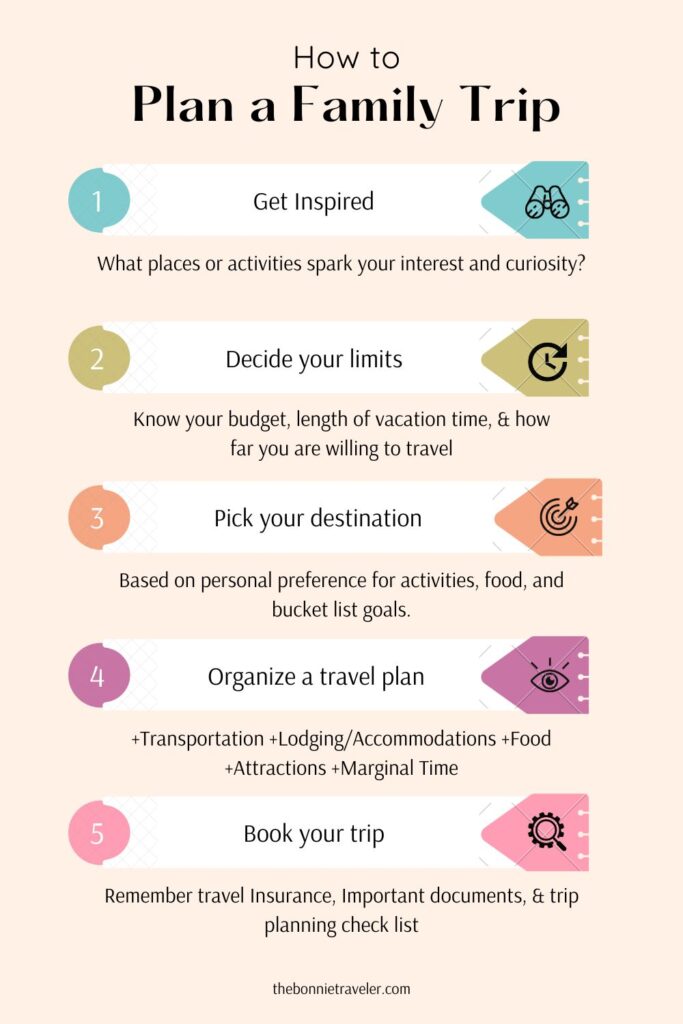
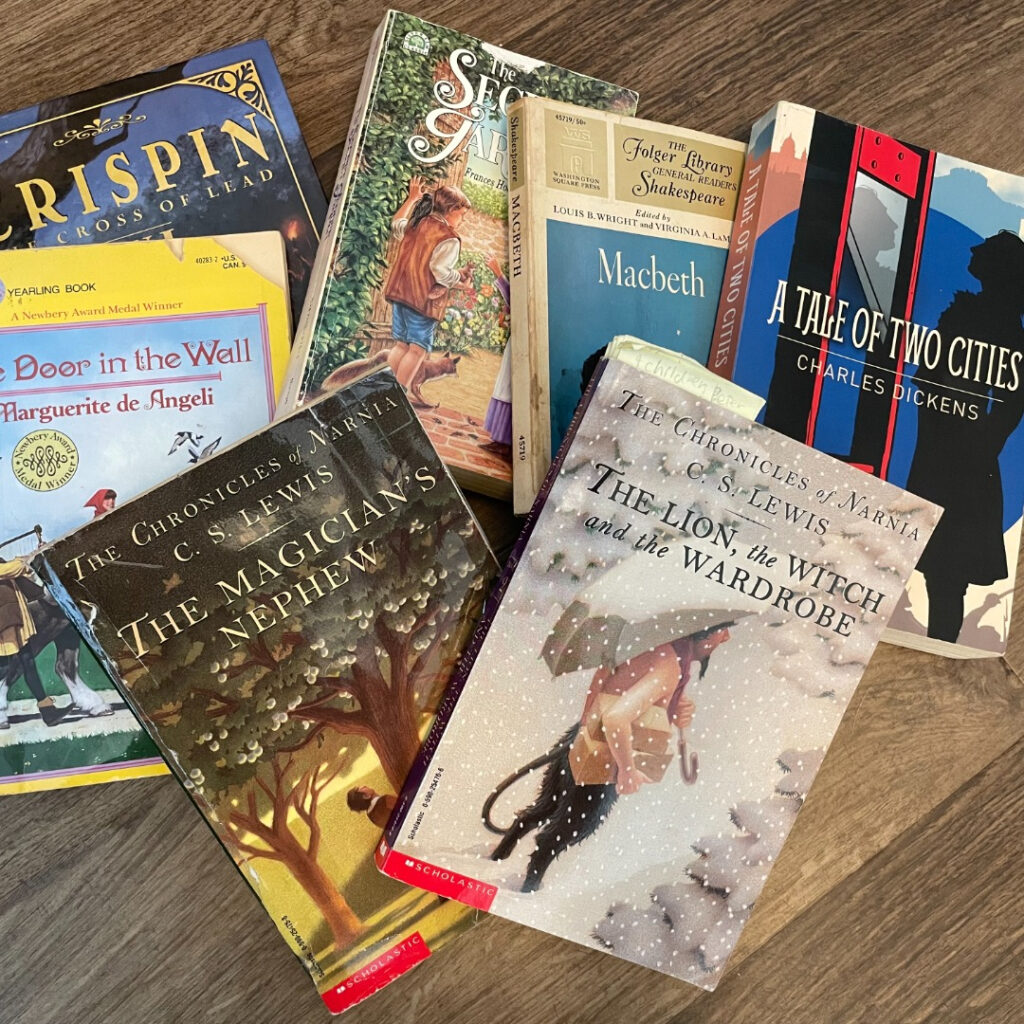
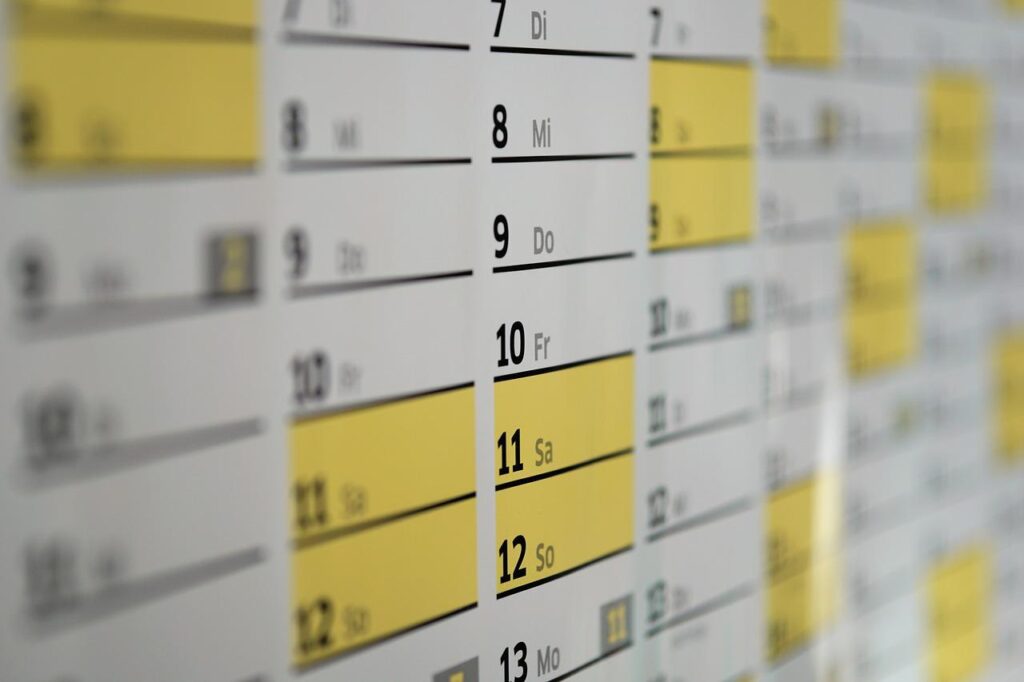
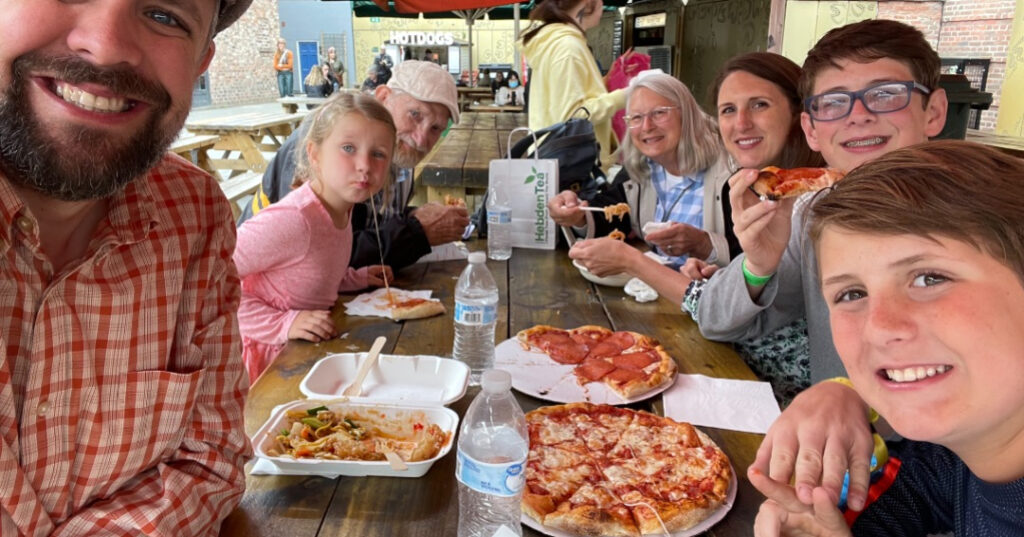
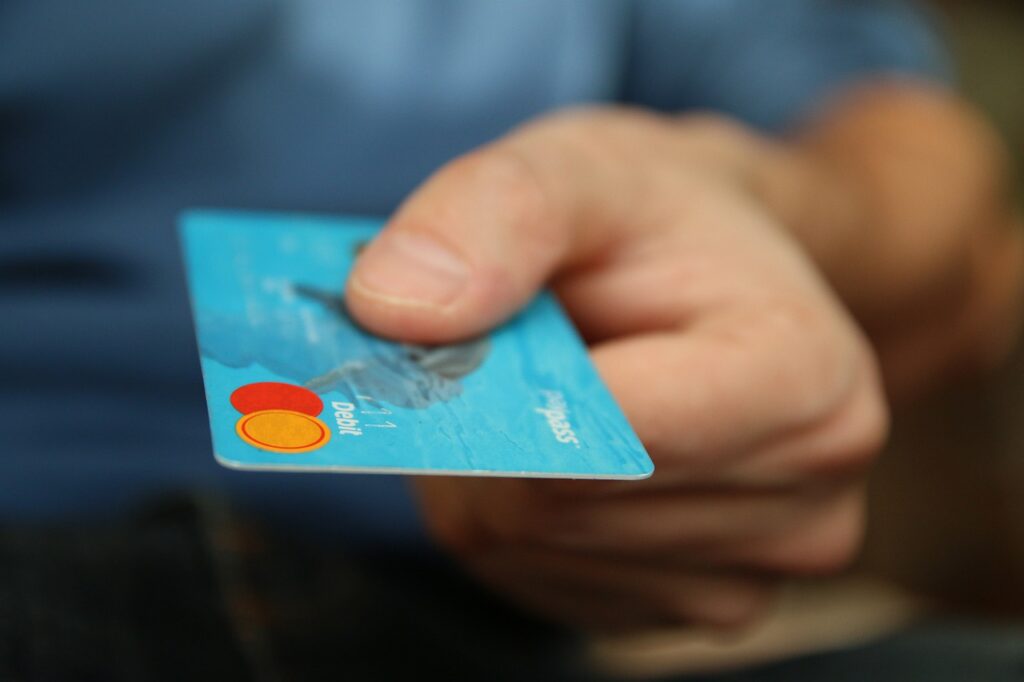
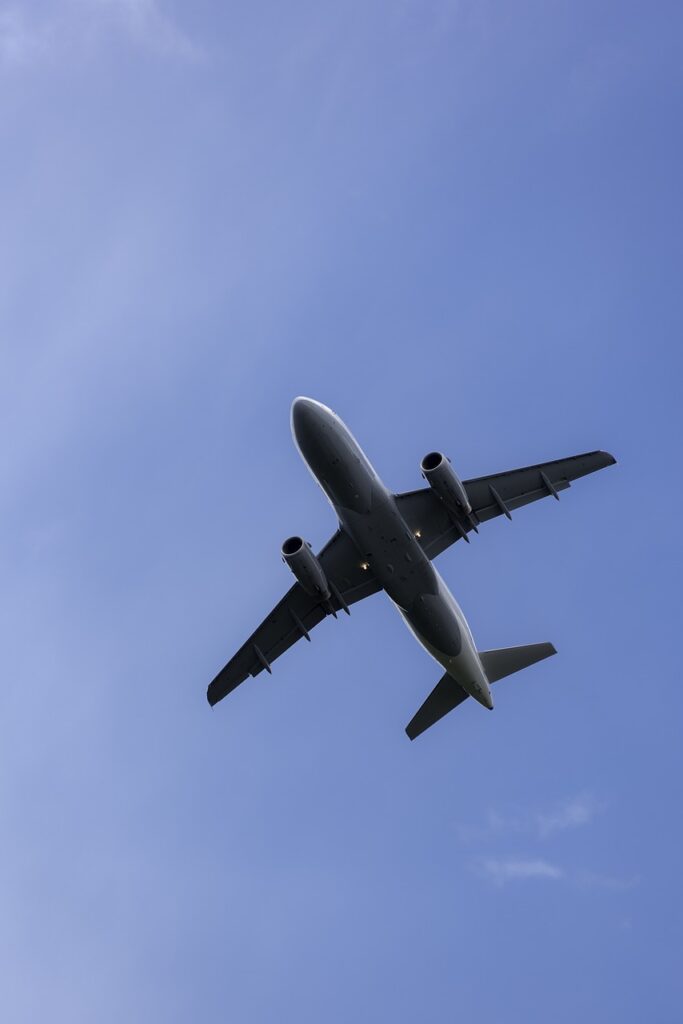
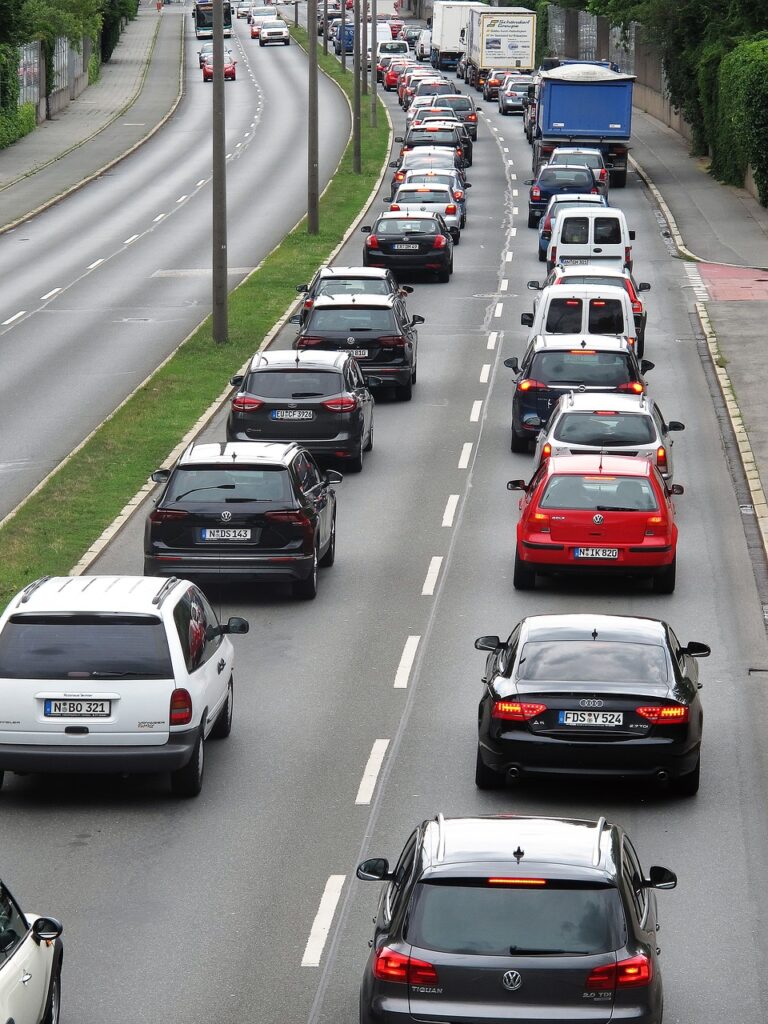

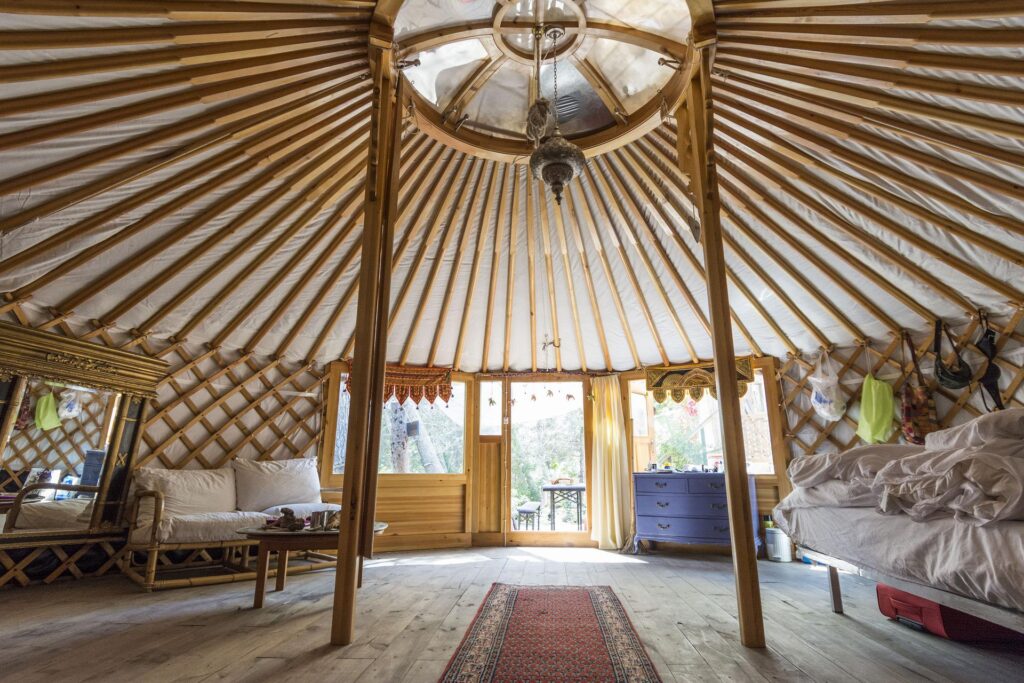


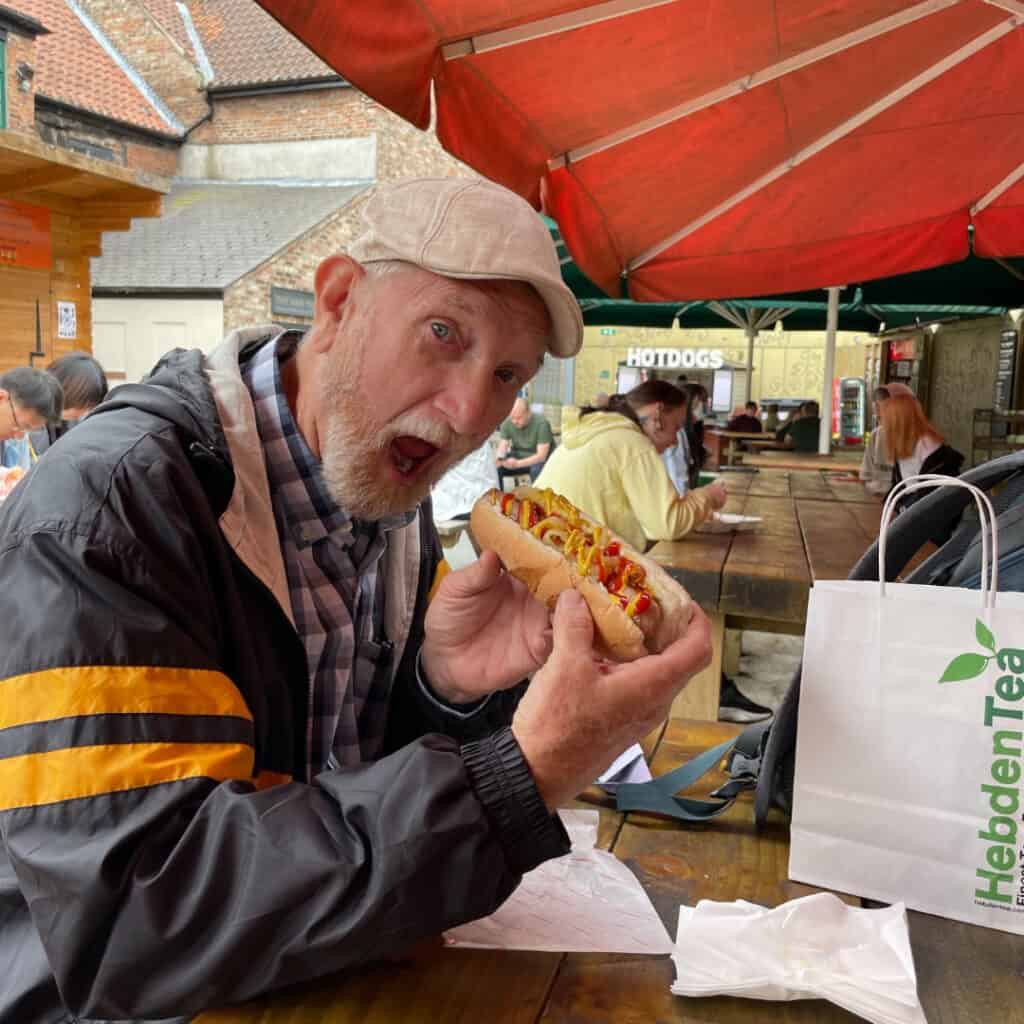

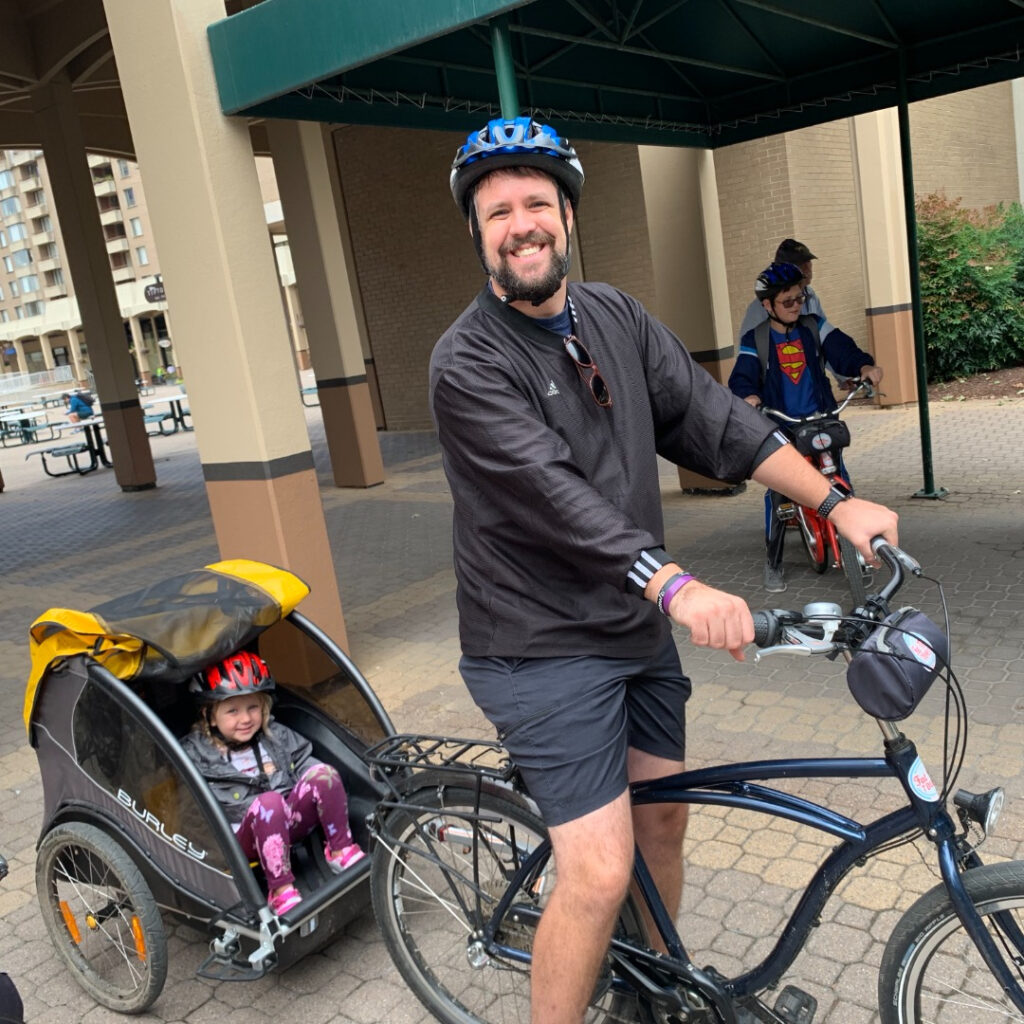
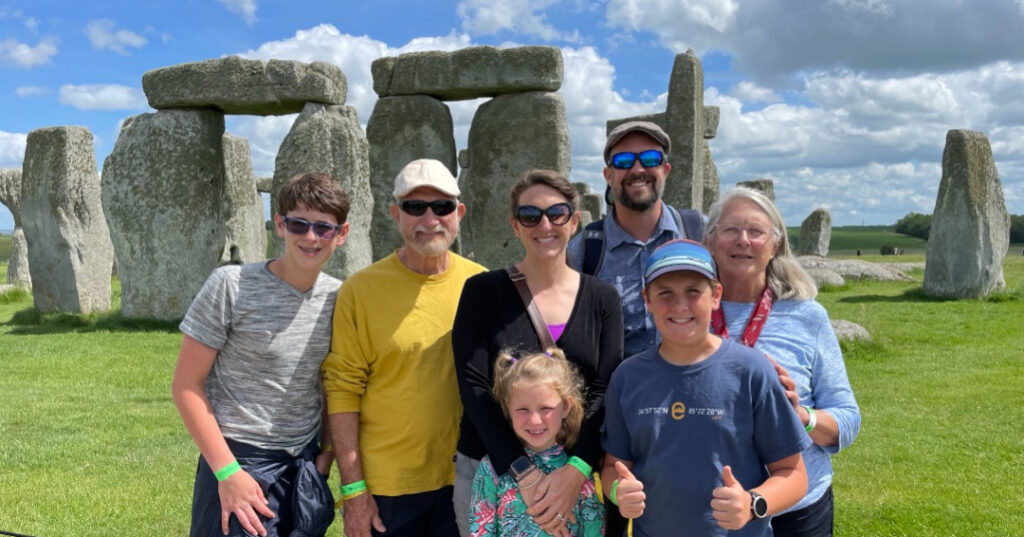
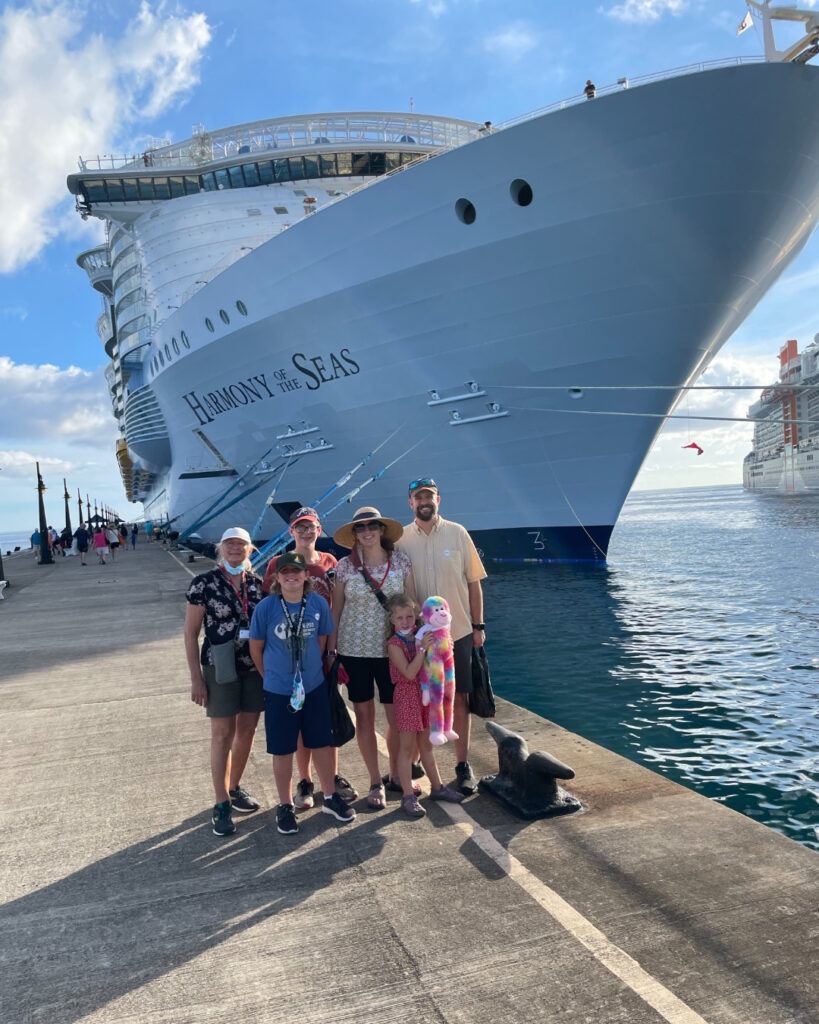

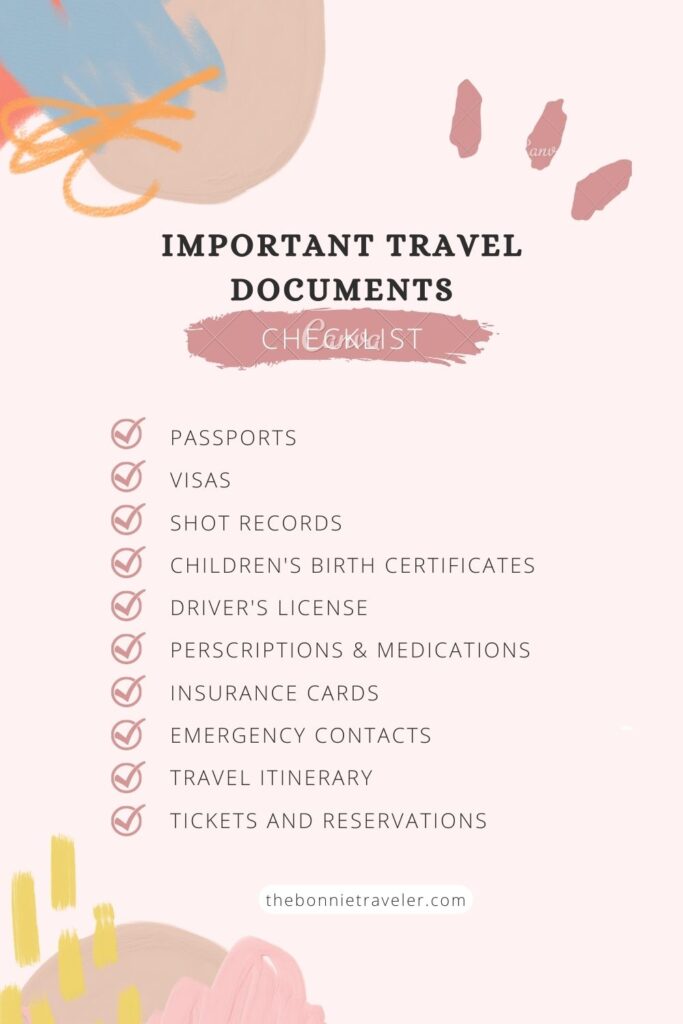




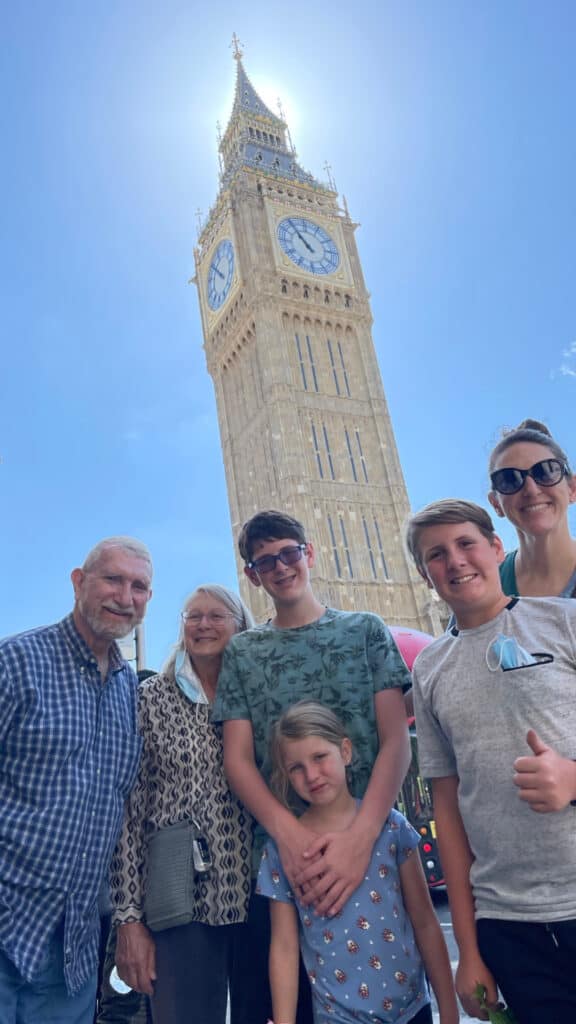
Pingback: Best Christmas Markets Around the World - KarsTravels
Pingback: How Local Cultural Festivals can Inspire Your Next Trip - The Bonnie Traveler
Pingback: 6 Best tips for long flights with kids - The Bonnie Traveler
Pingback: What Side of the Road do They Drive on in Ireland? - The Bonnie Traveler